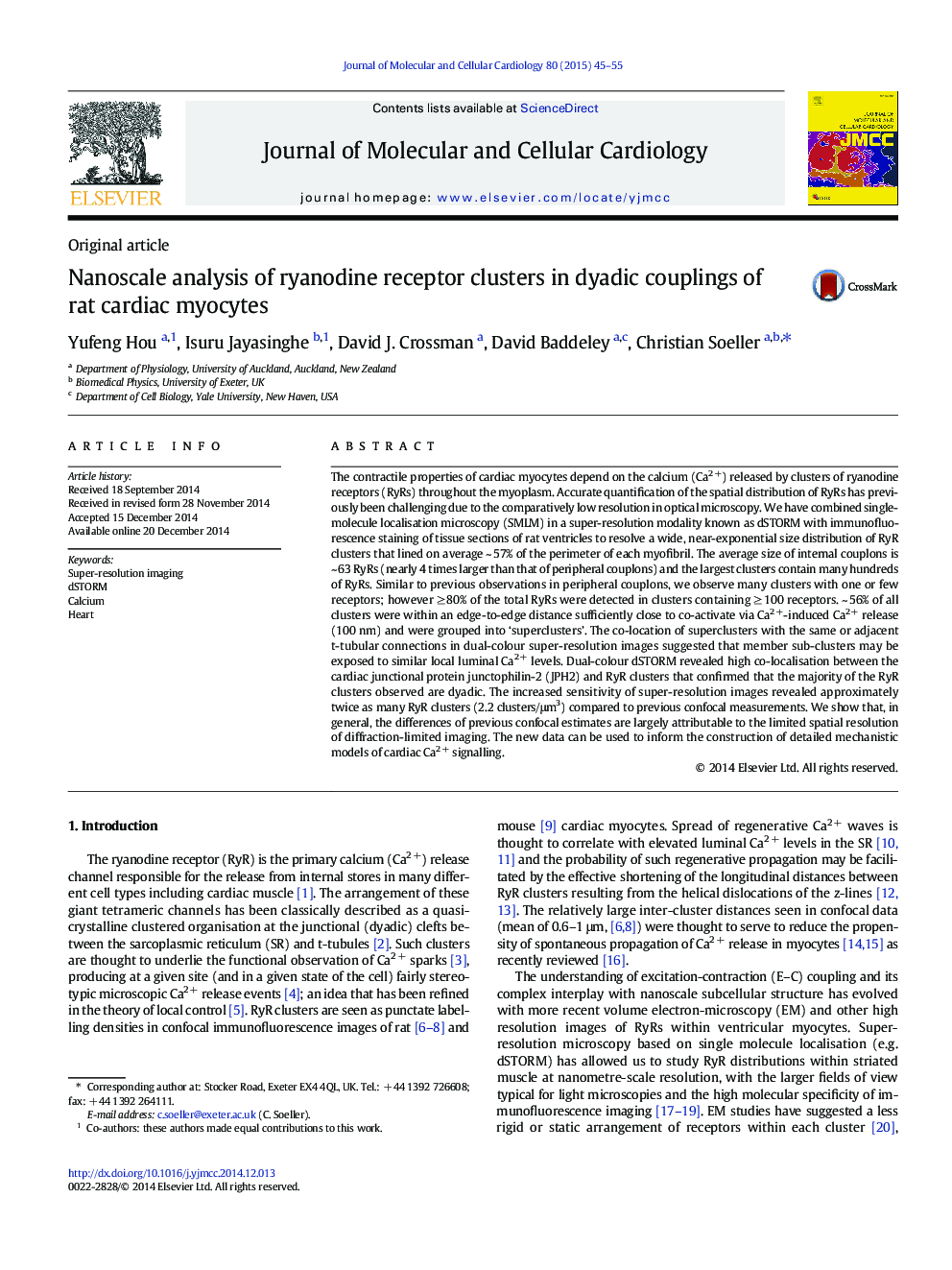| Article ID | Journal | Published Year | Pages | File Type |
|---|---|---|---|---|
| 8474378 | Journal of Molecular and Cellular Cardiology | 2015 | 11 Pages |
Abstract
The contractile properties of cardiac myocytes depend on the calcium (Ca2 +) released by clusters of ryanodine receptors (RyRs) throughout the myoplasm. Accurate quantification of the spatial distribution of RyRs has previously been challenging due to the comparatively low resolution in optical microscopy. We have combined single-molecule localisation microscopy (SMLM) in a super-resolution modality known as dSTORM with immunofluorescence staining of tissue sections of rat ventricles to resolve a wide, near-exponential size distribution of RyR clusters that lined on average ~ 57% of the perimeter of each myofibril. The average size of internal couplons is ~ 63 RyRs (nearly 4 times larger than that of peripheral couplons) and the largest clusters contain many hundreds of RyRs. Similar to previous observations in peripheral couplons, we observe many clusters with one or few receptors; however â¥Â 80% of the total RyRs were detected in clusters containing â¥Â 100 receptors. ~ 56% of all clusters were within an edge-to-edge distance sufficiently close to co-activate via Ca2 +-induced Ca2 + release (100 nm) and were grouped into 'superclusters'. The co-location of superclusters with the same or adjacent t-tubular connections in dual-colour super-resolution images suggested that member sub-clusters may be exposed to similar local luminal Ca2 + levels. Dual-colour dSTORM revealed high co-localisation between the cardiac junctional protein junctophilin-2 (JPH2) and RyR clusters that confirmed that the majority of the RyR clusters observed are dyadic. The increased sensitivity of super-resolution images revealed approximately twice as many RyR clusters (2.2 clusters/μm3) compared to previous confocal measurements. We show that, in general, the differences of previous confocal estimates are largely attributable to the limited spatial resolution of diffraction-limited imaging. The new data can be used to inform the construction of detailed mechanistic models of cardiac Ca2 + signalling.
Related Topics
Life Sciences
Biochemistry, Genetics and Molecular Biology
Cell Biology
Authors
Yufeng Hou, Isuru Jayasinghe, David J. Crossman, David Baddeley, Christian Soeller,
